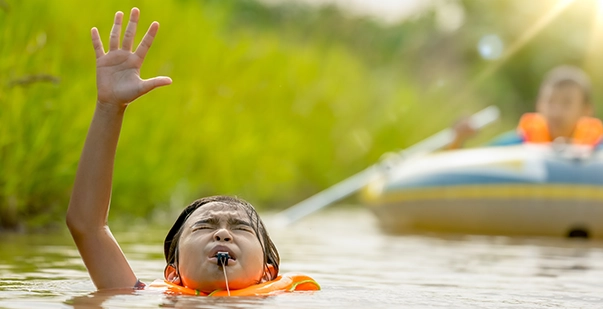What To Do If Someone Is Choking On Water?
An individual can choke on water during swimming, drinking, or any other day-to-day activity. Over 5000 people in the US die from choking in the US. Often dismissed as a minor inconvenience, choking on water can quickly escalate to a life-threatening emergency.
The problem actually escalates when water enters the airway instead of the esophagus. This obstructs the normal flow of oxygen causing coughing, wheezing and choking. The person experiencing choking may show signs of distress, anxiety, and panic. In this blog, we will gradually explore through the signs of choking, remedies and quick tips on what to do when someone is choking.
What to do when someone is choking?
Encountering a situation where someone is choking demands quick and decisive action. Whether the choking episode arises from a piece of food, an object, or even water, knowing how to respond can make the crucial difference in ensuring the person’s safety.
Find below the steps to take when faced with a choking emergency-
- Stay Calm: Maintain composure to think and act rationally.
- Assess the situation: Choking on water is an extremely distressing situation that can happen unexpectedly. Such accidents require prompt action. and decisive intervention.
What are the signs of choking?
By being aware of the signs of choking, one can avoid aggravation of situations when someone chokes on water. On observing the signs, one can immediately begin to help the victim without further delay. Below mentioned are the prominent signs of choking that demands immediate intervention-
- Coughing: Persistent and forceful coughing may indicate the body’s attempt to expel the obstructing object or substance.
- Inability to Speak or Cry Out: If the person is unable to produce sound or is making weak or no sounds at all, it could signal a blocked airway.
- Struggling to Breathe: Choking may lead to difficulty breathing, manifested by labored breaths or gasping for air.
- Blue Lips or Face: Insufficient oxygen intake can cause a bluish tint to the lips or face, indicating a severe lack of oxygen.
- Clutching the Throat: The universal sign of choking involves the person grabbing their throat, signaling discomfort and distress.
- Wheezing or High-Pitched Sounds: Unusual sounds while breathing, such as wheezing or high-pitched noises, may be indicative of a partially blocked airway.
- Loss of Consciousness: In severe cases, choking can lead to a loss of consciousness. If this occurs, immediate action is paramount.
- Severity: Determine if the person can cough or speak. If they can, encourage continued coughing to try and expel the obstruction.
- Encourage Coughing: If the person is coughing forcefully, allow them to continue. Coughing is a natural reflex to clear the airway.
- Perform Back Blows: Stand behind the person, place one arm across their chest, lean them forward, and deliver firm back blows between the shoulder blades.
- Perform Abdominal Thrusts (Heimlich Maneuver): Stand behind the person, place your arms around their waist, make a fist, and perform quick, upward thrusts to dislodge the obstruction.
- Continue Alternating: If the choking persists, alternate between back blows and abdominal thrusts until the object is expelled or emergency help arrives.
- Call for Emergency Assistance: If the person is still choking after several attempts, call emergency services immediately.
- Monitor and Provide Support: Stay with the person, monitor their condition, and provide support until professional help arrives.
What are the most common choking hazards?
From the kitchen to play areas, recognizing common items that can pose a risk of choking empowers individuals to take preventative measures. Listed below are top 5 choking hazards encountered in everyday life.
- Small Objects: Items like coins, buttons, small toys, or household items can easily become lodged in the airway, especially for young children.
- Food: Certain foods, particularly those hard, round, or with a sticky consistency, pose significant choking risks. Examples include nuts, grapes, popcorn, and chewing gum.
- Balloons: While popular for celebrations, deflated or broken balloons can be a serious choking hazard, particularly for young children who may put them in their mouths.
- Toys with Small Parts: Playthings designed for older children may contain small detachable parts that can be a choking risk for younger siblings.
- Coins and Batteries: Small household items such as coins and button batteries, commonly found in electronic devices, can pose a serious threat if ingested.
Conclusion
Choking on water can happen anytime and to anyone. The severity of choking on water is unknown by many. It is during those helpless times, when situations get out of hand, people realize the importance of timely intervention. If you witness someone choking on water, taking prompt and decisive action is necessary. Following the steps mentioned above, one can successfully dislodge the obstruction and save a life. Remember, understanding the basics of choking can make a lifesaving difference when every second counts.
Read More: Get CPR certified for free!


